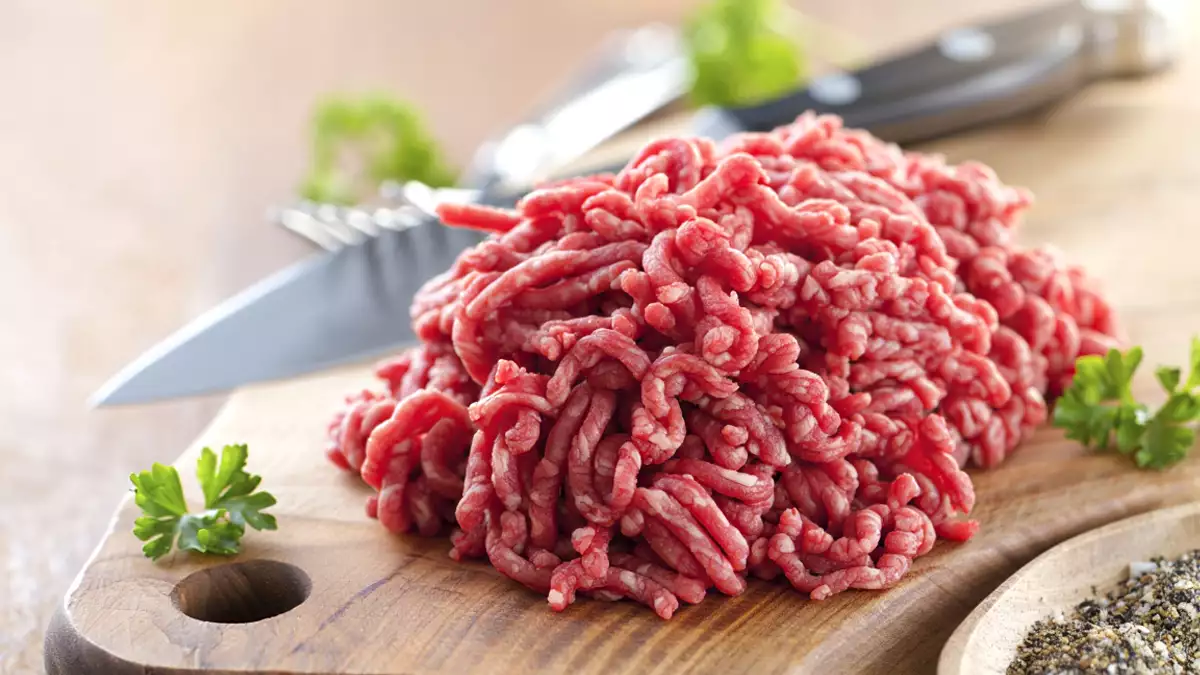Which minced meat to choose according to the dish you are going to cook (and get it right every time)

There is no home cooking without minced meat. We find it in childhood macaroni, in Sunday meatballs, in hamburgers improvised with friends... Its price is accessible, its use seems simple and, nevertheless, we rarely pay attention to the essential: what meat we are buying and how it is minced.
Behind the sign "meat for stewing or mincing" that we see in butcher's shops, there is a range of possibilities that condition the result. It is not the same to prepare a juicy hamburger as a slow-cooked ragout or a raw tartar. The difference is not in the final recipe, but in the starting point: animal, cut, fat and type of mincing.
Hamburgers
The contemporary hamburger has left behind improvisation to become a dish that demands precision. Texture is essential.
Cuts with flavor and a certain proportion of fat are recommended, such as flank, stifle or old cow's hip. A 20-25 % fat content is the ideal balance: enough to provide juiciness, without the meat releasing excess water. The mincing should be coarse and in a single pass.
A frequent mistake is to mince too much: the result is a uniform mass that loses juiciness and does not roast properly on the griddle, because when the fibers are broken in excess the meat releases water and proteins, and instead of browning it cooks in its own juices.
Steak tartar
If the hamburger seeks structure, the tartar demands purity. Here there is no place for the mincer: the meat is cut with a knife, in tiny, regular cubes, because this way it retains its natural texture, does not oxidize excessively or release water, and maintains that clean flavor that would be lost in a mechanical grinding.
The cut par excellence is the sirloin, lean, clean and tender. The percentage of fat should be minimal, less than 10%, so that the natural flavor of the meat is not obscured.
The secret of tartar lies in the moment: the meat should be cut just before serving, avoiding oxidation and loss of juices.
Meatballs
The meatball is the field of negotiation: it looks for flavor, but above all juiciness. For this reason, the combination of veal and pork is the most balanced option.
The most appreciated cuts are the veal tapa or the veal needle, to which a touch of needle or pork belly can be added. The percentage of fat can go up to 30 %, without fear: the sauce and the long cooking balance it.
The mincing here should be fine, even double, to facilitate the union with bread, egg or spices.
Russian steaks
Cousins of the hamburger, Russian steaks require a different texture: more compact, less fibrous.
It is advisable to use hip or top cuts, with 20% fat, and to ask for a medium-fine mincing, in a single pass. The meat should be loose enough to be mixed with bread or egg, but without becoming mashed.
Bolognese and ragu
In the Bolognese sauce, the minced meat is not the only protagonist, but an element that blends with vegetables, tomato and wine. What is essential here is not the nobility of the cut, but its capacity to give flavor to the whole.
We recommend pieces such as the skirt steak, the needle or the knuckle, with 15-20% fat. The mincing should be medium, a little thicker than that of the meatball, to maintain presence in the sauce.
The method is as important as the cut: the meat should be sautéed in a hot pan, never cooked. Afterwards, patience: the ragu cooks for hours until it reaches density and depth.
Fillers
When minced meat is intended for cannelloni, lasagna or stuffed vegetables, the important thing is homogeneity, that is to say, that the mincing be fine and regular to achieve a uniform mixture, without large pieces that break the texture of the dish.
Cuts of veal skirt steak or veal shank, or even chicken thigh, work well. The fat should be around 15-20% and the mincing should be fine, so that the stuffing is smooth and well bound.
Minced meat without borders: Chili, musakas...
Each culture has turned minced meat into its own heritage.
- Mexican chili calls for veal with 20 % fat and medium-thick mince, able to withstand long cooking with spices and legumes.
- Greek moussaka is built with minced lamb, especially leg or flank, with 20 % fat and medium mince. In Japan, tsukune use chicken thigh, breast and skin, with an astonishing 30% fat, minced twice until a delicate texture is achieved.
- In the Middle East, keftas (spiced meat skewers) are usually made with finely chopped lamb or beef, mixed with herbs and spices, seeking a more elaborate and homogeneous mass that adheres to the skewer and remains juicy when grilled.
As we can see, minced meat travels around the world and is transformed in each cuisine: different cuts, fat and techniques make each recipe unique.
How to buy well: the fine print in the butcher's shop
- Ask for specific cuts: hips for hamburgers, sirloin for tartar, needle for ragout.
- Define the mince: coarse for hamburger, fine for meatball.
- Ask about the fat: between 15 and 25% is usual.
- Be wary of industrial trays: they do not indicate what parts they contain nor what additives they contain.
- Buy daily: minced meat oxidizes quickly; if you do not use it, freeze it in portions.
The detail that changes a dish
To speak of minced meat is to speak of the cuisine that most represents us. The same raw material is transformed into hamburger, meatball or ragout depending on the cut, the fat and the mincing. Three invisible decisions that make the difference between a good dish and a memorable one.
In the end, what is essential is not only the recipe, but the question that precedes it in the butcher's shop: 'What meat do I need for the dish I want to prepare?
 Patricia González
Patricia González
Comments